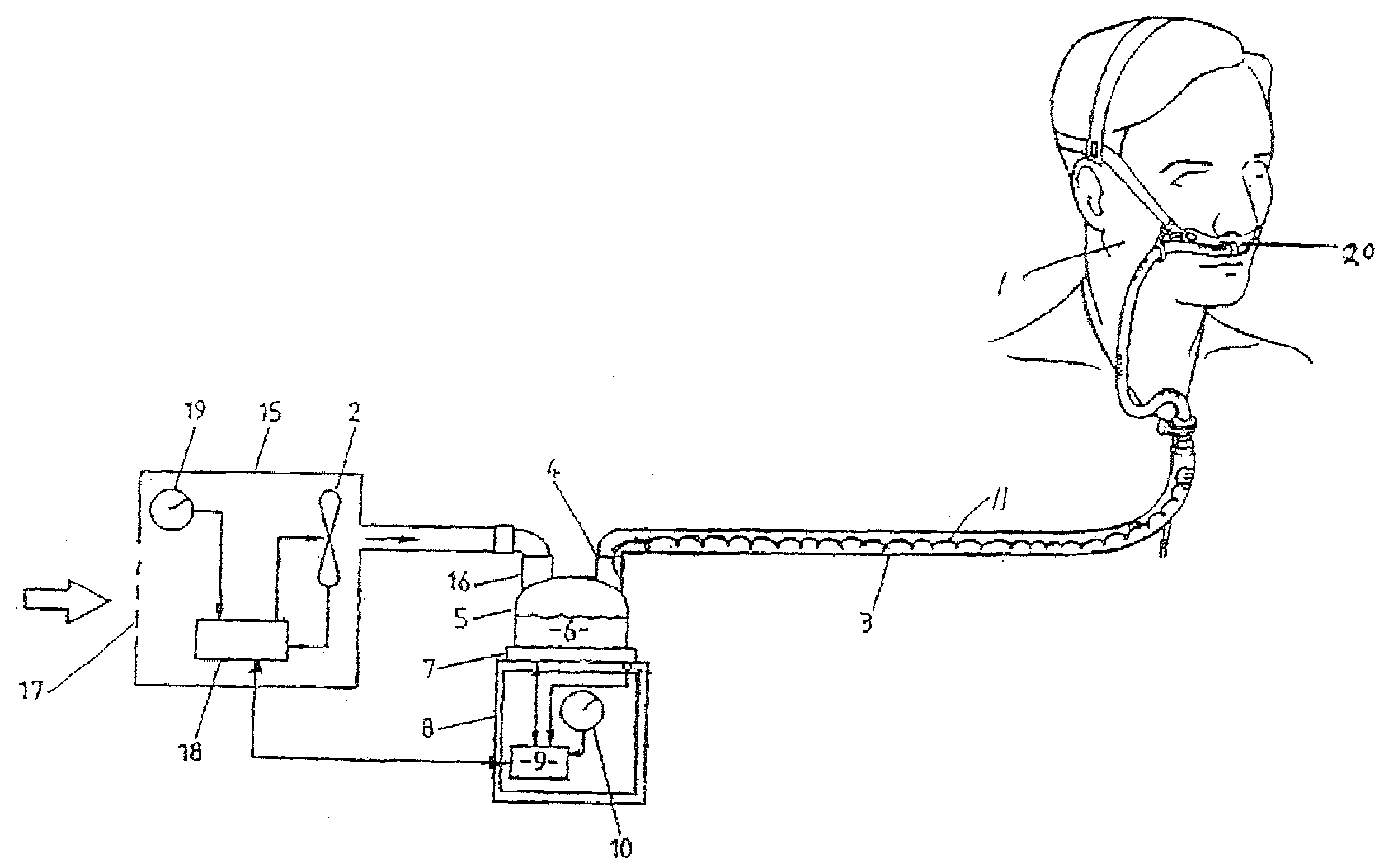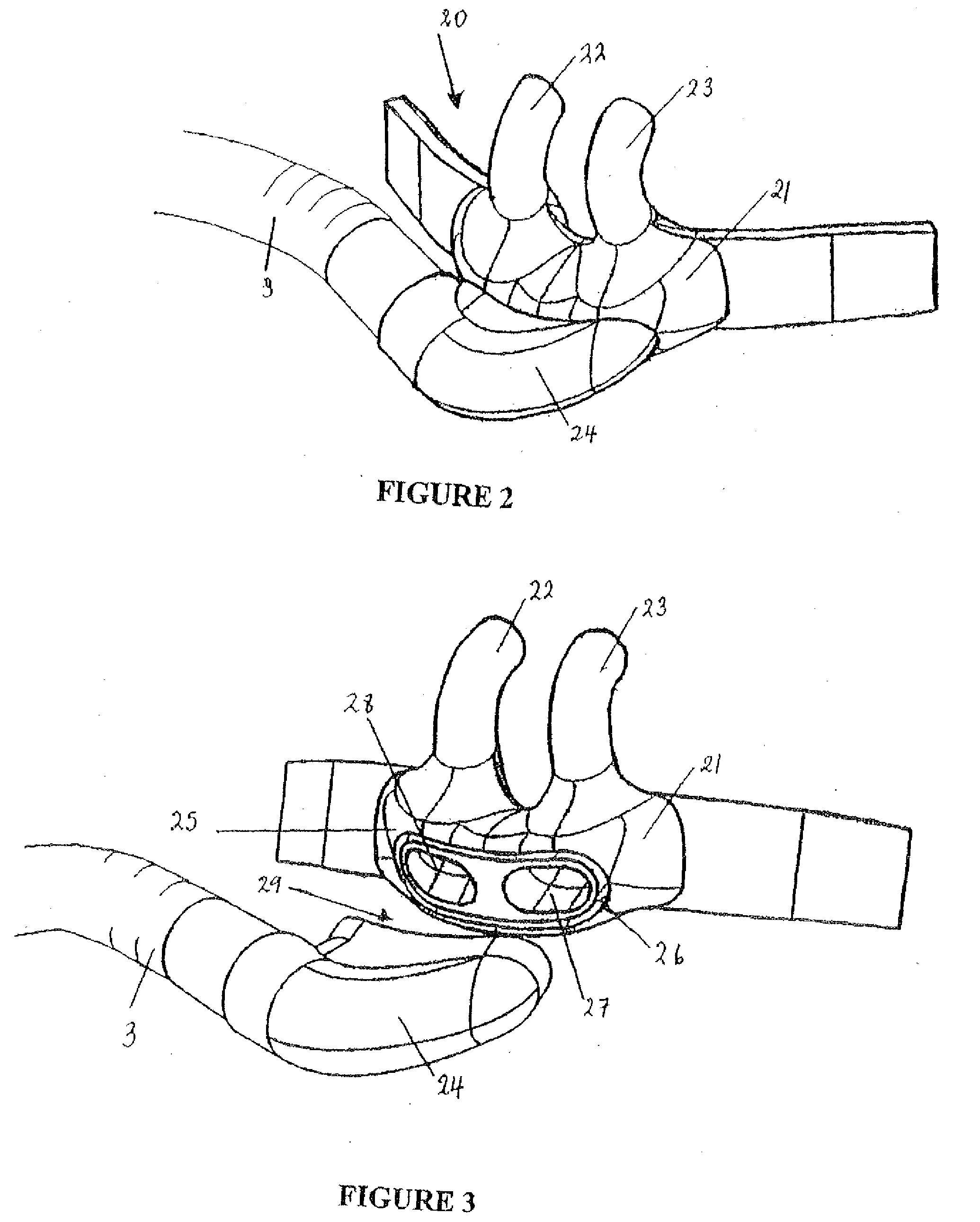Breathing assistance apparatus
a technology of assistance apparatus and air intake tube, which is applied in the direction of ohmic resistance heating, life-saving devices, and other medical devices, can solve the problems of product not designed for delivering high flow or high humidity gases, user difficulty in use, and tube to cross the body, etc., and achieves the effect of more comfort and acceptabl
- Summary
- Abstract
- Description
- Claims
- Application Information
AI Technical Summary
Benefits of technology
Problems solved by technology
Method used
Image
Examples
Embodiment Construction
[0039]Whether used in a hospital environment or in a home environment the nasal cannula assembly of the present invention will generally have associated three main pieces of apparatus. Firstly an active humidifier that controls the temperature of a heater plate heating a body of water to achieve a desired temperature and humidity of the gases being humidified. Secondly a transport conduit from the humidifier to the patient is also required, which is preferably heated to reduce condensation, or “rain out”. Thirdly a nasal cannula designed to fit into the nasal cavity of a patient or user and deliver humidified, pressurized gases.
[0040]Referring to FIG. 1 a humidifying circuit as might be used with the nasal cannula of the present invention is shown. A patient 1 is receiving humidified and pressurised gases trough a nasal cannula 20 connected to a humidified gases transportation pathway or inspiratory conduit 3 that in turn is connected to a humidifier 8 (including humidification cham...
PUM
 Login to View More
Login to View More Abstract
Description
Claims
Application Information
 Login to View More
Login to View More - R&D
- Intellectual Property
- Life Sciences
- Materials
- Tech Scout
- Unparalleled Data Quality
- Higher Quality Content
- 60% Fewer Hallucinations
Browse by: Latest US Patents, China's latest patents, Technical Efficacy Thesaurus, Application Domain, Technology Topic, Popular Technical Reports.
© 2025 PatSnap. All rights reserved.Legal|Privacy policy|Modern Slavery Act Transparency Statement|Sitemap|About US| Contact US: help@patsnap.com



